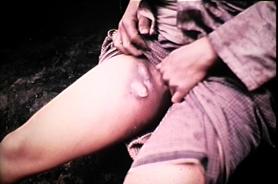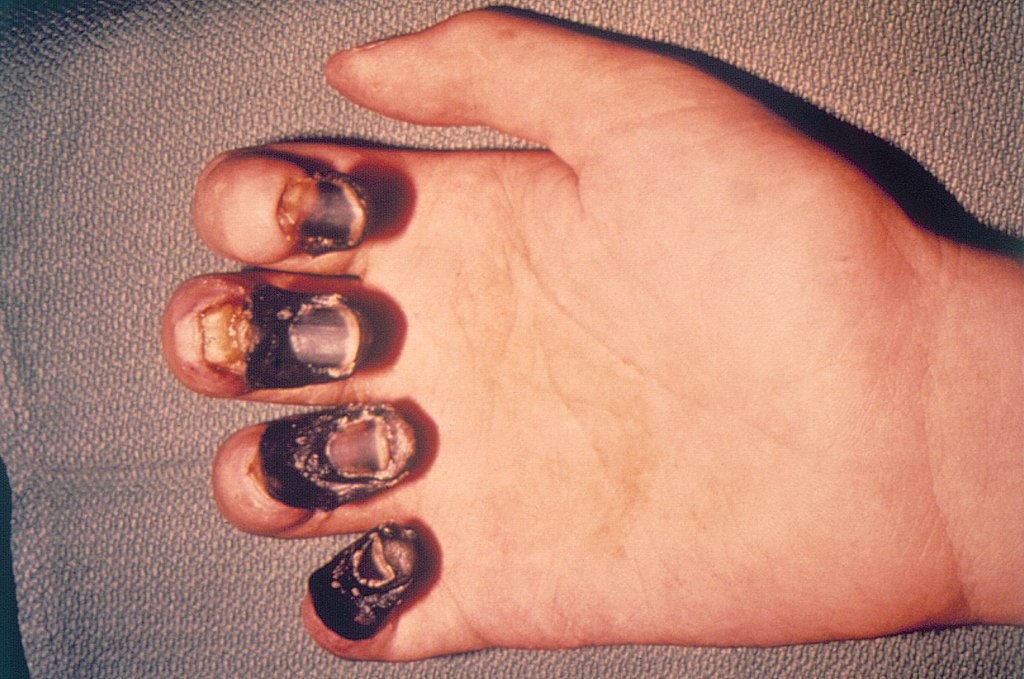The Black Death:

 Contemporary accounts of the plague are often varied or imprecise. The most commonly noted symptom was the appearance of buboes (or gavocciolos) in the groin, the neck and armpits, which oozed pus and bled when opened.
Contemporary accounts of the plague are often varied or imprecise. The most commonly noted symptom was the appearance of buboes (or gavocciolos) in the groin, the neck and armpits, which oozed pus and bled when opened.
This was followed by acute fever and vomiting of blood. Most victims died two to seven days after initial infection. David Herlihy identifies freckle-like spots and rashes which could be caused by flea-bites as another potential sign of the plague.

A hand showing how arcal gangrene of the fingers due to bubonic plague causes the skin and flesh to die and turn black.

The Black Death was one of the most devastating pandemics in human history, resulting in the deaths of an estimated 75 to 200 million people and peaking in Europe in the years 1346–53. Although there were several competing theories as to the etiology of the Black Death, analysis of DNA from victims in northern and southern Europe published in 2010 and 2011 indicates that the pathogen responsible was the Yersinia pestis bacterium, probably causing several forms of plague.
Symptoms:

This was followed by acute fever and vomiting of blood. Most victims died two to seven days after initial infection. David Herlihy identifies freckle-like spots and rashes which could be caused by flea-bites as another potential sign of the plague.

A hand showing how arcal gangrene of the fingers due to bubonic plague causes the skin and flesh to die and turn black.
Causes:
The dominant explanation for the Black Death is the plague theory, which attributes the outbreak to Yersinia pestis, also responsible for an epidemic that began in southern China in 1865, eventually spreading to India. The investigation of the pathogen that caused the 19th-century plague was begun by teams of scientists who visited Hong Kong in 1894, among whom was the French-Swiss bacteriologist Alexandre Yersin, after whom the pathogen was named Yersinia pestis. The mechanism by which Y. pestis was usually transmitted was established in 1898 by Paul-Louis Simond and was found to involve the bites of fleas whose midguts had become obstructed by replicating Y. pestis several days after feeding on an infected host. This blockage results in starvation and aggressive feeding behaviour by the fleas, which repeatedly attempt to clear their blockage by regurgitation, resulting in thousands of plague bacteria being flushed into the feeding site, infecting the host. The bubonic plague mechanism was also dependent on two populations of rodents: one resistant to the disease, which act as hosts, keeping the disease endemic; and a second that lack resistance. When the second population dies, the fleas move on to other hosts, including people, thus creating a human epidemic.
The overall spread of the Black Death in Europe
The overall spread of the Black Death in Europe

Δεν υπάρχουν σχόλια:
Δημοσίευση σχολίου